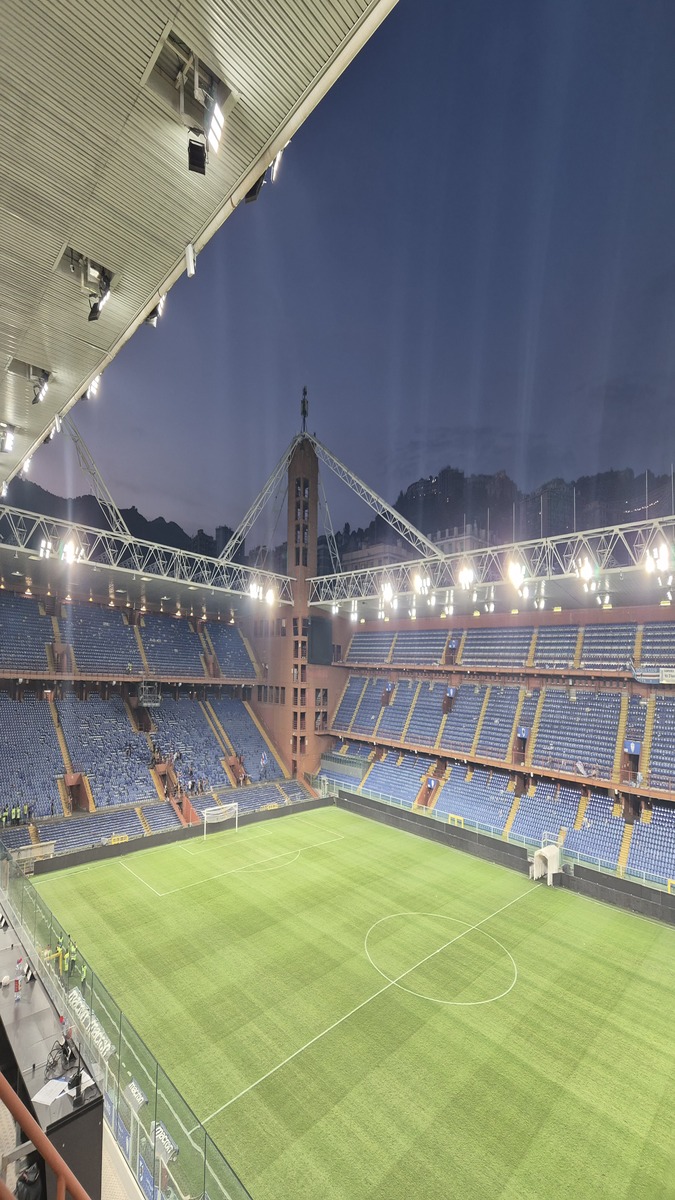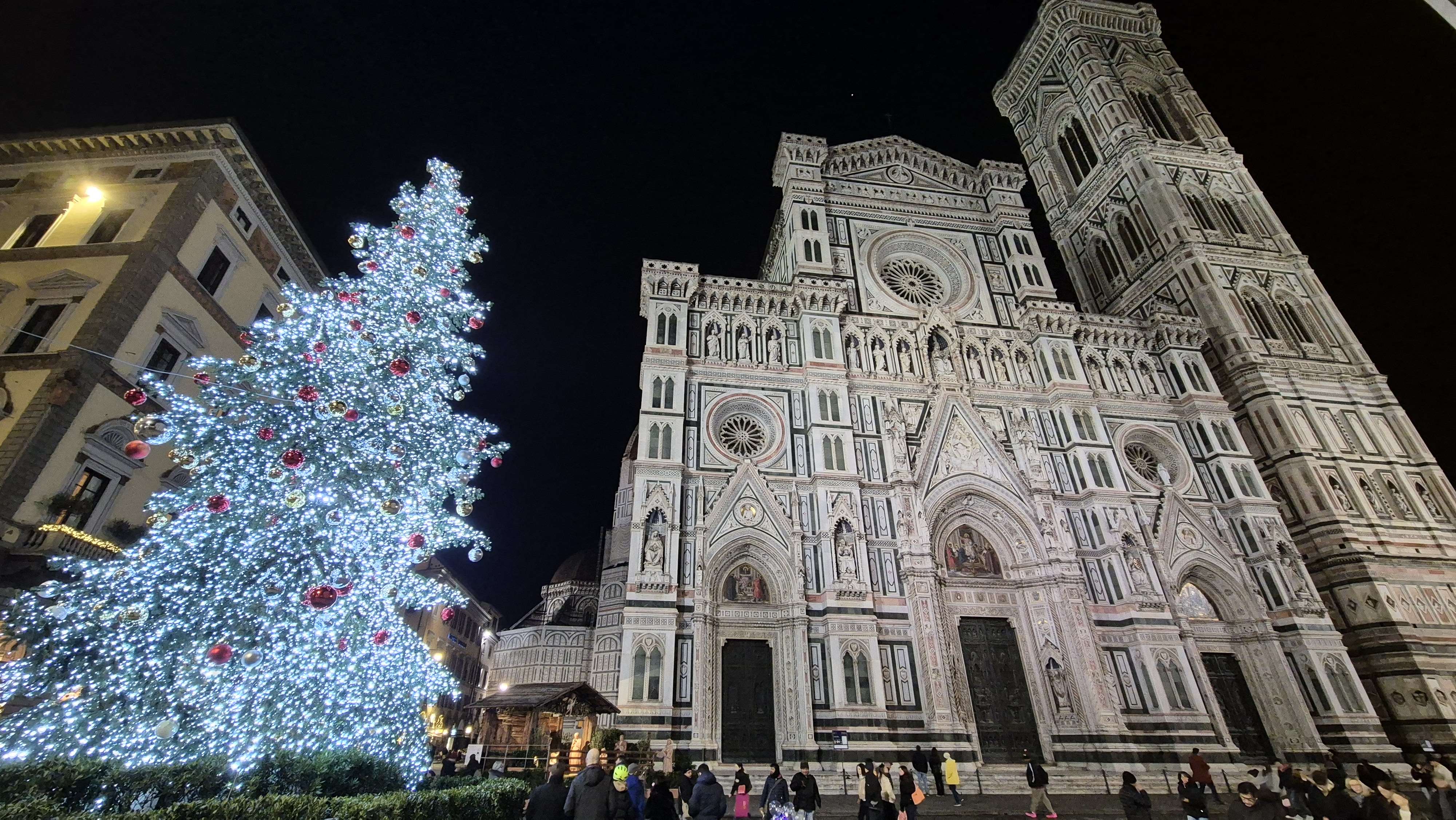
With the exception of San Siro, few, if any, stadiums in Italy are as instantly recognisable as the Stadio Luigi Ferraris in Genoa.
For decades Marassi – as it is colloquially known after the area it is located in – was something of an anomaly in Serie A.
In a league dominated by grounds featuring a running track, the Ferraris – which was originally built in 1911 and completely renovated for the 1990 World Cup – stood alone as an example of what Italians describe as a ‘Stadio all’Inglese’ – an English-style ground with stands very close to the pitch.
The result is one of the most picturesque stadiums on the Peninsula and one that provides one of the fiercest atmospheres in the country, when Genoa and Sampdoria square off in the Derby della Lanterna – which owes its name to the Lighthouse Tower, Genoa’s ancient landmark and the main lighthouse for the city’s port.
Significantly, rather than the curve – curved stands behind the goal – that characterise most Italian grounds, the Ferraris is famous for its two Gradinate – flights of steps behind each goal resembling the English-style ends.
When Destination Calcio visited Marassi for Sampdoria’s stalemate draw with Bari at the end of August, we were treated to an electric atmosphere, despite both clubs languishing towards the bottom of the Serie B table.

With tifo flags swaying rhythmically as the smoke of flares quickly filled the hot summer afternoon air, the Blucerchiati ultras in the Gradinata Sud delivered the kind of spectacle one would associate with big European nights.
Their efforts were matched by their Rossoblu counterparts on Sunday, when Genoa faced Verona as both Gradinates belted out a spine-tingling version of You’ll Never Walk alone, before generating a cauldron of noise and colour.

Marassi’s English-style design is particularly apt, given Genoa, Italy’s oldest football club, were formed as Genoa Cricket and Football Club by British consular officials in 1893.
By the time the Ferraris opened in 1911, Genoa were the only tenants and were joined by newly-formed Sampdoria some 35 years later.
The stadium itself was only christened Luigi Ferraris in 1933, taking its name from a former Genoa captain, who lost his life in World War I.
Situated north-west of Genoa’s port in a working class area, Marassi is easily accessible by public transport.
And if you want to sweat off that focaccia and three pints of Moretti, then treat yourself to a quick jog over the Scalinata Montaldo. Located just across the road from the ground, this 200-step monster will take you all the way to the nearest bus stop.
Just like a game at the Ferraris, you don’t want to miss it.
Stadio Luigi Ferraris factfile
- Capacity: 33,205
- Clubs: Genoa and Sampdoria
- Opened: 1911
- Address: Via Giovanni de Prà, 1, 16139 Genova
How to get to the Luigi Ferraris by bus
From Genova Brignole train station
- 37 bus towards Via dei Platani – Six stops to De Stefanis2/Bertuccioni stop
- 14, 47, 82 or 356 bus northbound – Five stops to Fereggiano1/Galileo Ferraris stop, then walk for about five minutes.
- 480 or 482 bus towards St. Eusebio – Four stops to Delpiano/Tortosa stop, then walk for about five minutes.
From Genova Principe train station
- 18 bus towards PS S. Martino from the Gramsci1/Commenda stop – Four stops to
- 34 bus from Doria Metro station towards Cimitero Staglieno – 10 stops to Montaldo1/Scalinata Montaldo, then walk 15 minutes.
How to buy public transport tickets
Public transport tickets are on sale at AMT ticket offices; they can also be purchased at newsstands, tobacconists as well as most bars across the city.
Some tickets can also be purchased via the AMT Genova app, which is available to download for free on Apple Store and Google Play.
Single tickets cost €2 and are valid for 110 minutes from validation throughout the entire urban and provincial network (bus, subway, funiculars, elevators). These tickets are not valid on Navebus, Volabus and Genova – Casella railway.
Integrated single AMT / Trenitalia tickets cost €2.20 and are valid also on the urban railway network.
Tourist tickets (known as MetDaily) cost €10 and are valid for 24 hours from validation. These tickets allow you to travel on the entire urban and provincial network (bus, subway, funiculars, lifts, regional train), Navebus, Volabus, Genova Casella railway and Linea 782 Santa Margherita-Portofino
How to get to the Luigi Ferraris by car
If arriving by car, take the Genova Est exit from the A12 motorway, then follow directions to the city, and later on the signs to the stadium. Be aware, however, that Genoa’s traffic is notoriously difficult to negotiate.
Marassi is about a five-minute drive from Genova Brignole and a 15-minute cab journey from Genova Principe. From Genoa Airport, you can reach the stadium in around 20 minutes by car.
How to walk to the Luigi Ferraris
The Luigi Ferraris is about a 25-minute walk from Genova Brignole train station. Simply leave the station behind you heading north and walk along the Bisagno river on Corso Galliera for about a mile, always while keeping the river to your left.
How to buy Genoa tickets
Tickets can be bought online at genoacfc.vivaticket.it or in person at authorised sale points.
Tickets are also available at the Luigi Ferraris’ ticket office on matchday.
How to buy Sampdoria tickets
Tickets can be bought via Ticketone or at the ticket office at the stadium, where they are also available on matchday.
Related Articles
Related Articles
Florence is a dream destination year-round, but visiting during the winter months offers a completely different and magical experience.
We get a local take on what's hot in Cremona - where to eat and drink, sights to see and handy hints that might not be in the tourist guides.
The Artemio Franchi will always be the main reason calcio fans head to Florence but there is one other thing that must be on the to-do list.





